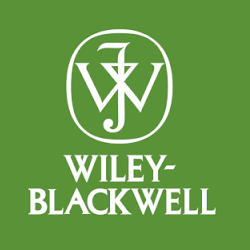دانلود ترجمه مقاله اینورترهای چند سطحی با تغذیه درایو موتور القایی – مجله مکسول
| عنوان فارسی مقاله: | مقایسه اینورترهای ۳ سطحی و ۹ سطحی تغذیه کننده درایوهای موتور القایی |
| عنوان انگلیسی مقاله: | Comparison of 3-Level and 9-Level Inverter-Fed Induction Motor Drives |
| دانلود مقاله انگلیسی: | برای دانلود رایگان مقاله انگلیسی با فرمت pdf اینجا کلیک نمائید |
| سال انتشار | ۲۰۱۱ |
| تعداد صفحات مقاله انگلیسی | ۱۱ |
| تعداد صفحات ترجمه مقاله | ۹ |
| مجله | علوم پژوهشی کاربردی مهندسی و تکنولوژی |
| دانشگاه | کارناتاکا، هند |
| کلمات کلیدی | موتور القایی، اینورترهای چند سطحی ، مبدل منبع ولتاژ، شبیه سازی با متلب |
| نشریه | Maxwell |
بخشی از ترجمه:
چکیده :
در این مقاله مقایسه بین اینورهای سه سطحی و اینورترهای نه سطحی تغذیه کننده درایو موتور القایی بیان می شود. یک مبدل منبع ولتاژ (VSI) مرسوم تغذیه کننده درایو موتور القایی، با استفاده از نرم افزار Matlab/Simulink مدلسازی و شبیه سازی می شود و نتایج ارائه می شود. همچنین اینورتر نه سطحی شبیه سازی می شود و نتایج مربوطه ارائه می گردد. طیف های تحلیل فوریه سریع (FFT) برای خروجیها برای مطالعه و بررسی کاهش هارمونیکها تحلیل می شوند.
١- مقدمه
درایوهای سرعت متغیر (ASD)، ضروری وبرای صنایع و محققان بی پایان می باشد. این درایوها بطور وسیعی در صنایع برای کنترل سرعت سیستم های بالابر، سرعت دمنده ها، سرعت ماشین ابزارها و سایر کاربردهایی که نیاز به تغییر سرعت می باشد استفاده می شوند. در بسیاری از کابردهای صنعتی قدیمی موتورهای DC برای درایوهای سرعت متغیر به علت سرعت عالی و پاسخ خوبشان بکار گرفته می شدند، اما آنها معایب ذاتی کموتاتور و جاروبک های مکانیکی دارند که طی گذر زمان دستخوش پوسیدگی و گسستگی می شوند. در بیشتر موارد، موتورهای AC نسبت به موتورهای DC ترجیح داده می شوند، مخصوصاً موتور القایی به علت قیمت پایین، نگهداری کم، وزن کمتر، بازده بالاتر و ناهمواری های بهبود یافته و قابلیت اطمینان.
بخشی از مقاله انگلیسی:
INTRODUCTIONAdjustable Speed Drives (ASDs) are the essential andendless demand of the industries and researchers. Theyare widely used in the industries to control the speed ofconveyor systems, blower speeds, machine tool speedsand other applications that require adjustable speeds. Inmany industrial applications, traditionally, DC motorswere the work horses for the Adjustable Speed Drives(ASDs) due to their excellent speed and torque response.But, they have the inherent disadvantage of commutatorand mechanical brushes, which undergo wear and tearwith the passage of time. In most cases, AC motors arepreferred to DC motors, in particular, an induction motordue to its low cost, low maintenance, lower weight, higherefficiency, improved ruggedness and reliability. All thesefeatures make the use of induction motors a mandatory inmany areas of industrial applications. The advancement inPower Electronics and semiconductor technology hastriggered the development of high power and high speedsemiconductor devices in order to achieve a smooth,continuous and stepless variation in motor speed.Applications of solid state converters/inverters foradjustable speed induction motor drive are wide spread inelectromechanical systems for a large spectrum ofindustrial systems. Comparision of fundamental and highfrequency carrier based techniques for NPC inverters isgiven by Feng and Vassilions (2000). Influence ofnumber of stator windings on the characteristics ofmotor is given by Golubev and Ignatenko (2000).Modified CSI-fed induction motor drive is given byGopukumar et al. (1984). Multilevel inverter modulationschemes to eliminate common mode voltage is given byZhang et al. (2000). Modulation scheme for six phaseinduction motor is given by Mohapatra et al. (2002).Improved reliability in solid state ac drives is given byThomas (1980). A multilevel converter for large electricdrives is given by Tolbert et al. (1999). Activeharmonic elimination for multilevel inverters is given byDuLeon et al. (2006). Implementation of multilevelinverter-fed induction motor is given by Pandian andReddy (2008).The poor quality of output current and voltage of aninduction motor fed by a classical two-level inverter isdue to the presence of harmonics. The presence ofsignificant amount of harmonics makes the motor tosuffer from severe torque pulsations, especially at lowspeed, which manifest themselves in cogging of the shaft.It will also causes undesired motor heating andelectromagnetic interference (Shivakumar et al., 2001).The reduction in harmonics calls for large sized filters,resulting in increased size and the cost of the system.Nowadays multilevel inverters are the promisingalternative and cost effective solution for high voltage andhigh power applications including power quality andmotor drive problems. Multilevel structure allows raisingthe power handling capability of the system in a powerfuland systematic way. The advancements in the field ofpower electronics and microelectronics made it possibleto reduce the magnitude of harmonics with multilevelinverters, in which the number of levels of the invertersare increased rather than increasing the size of the filters(Dixon and Moran, 2006). The performance of multilevelinverters enhances as the number of levels of the inverterincreases. In this paper the harmonic content of a 3-levelinverter is compared with a 9-level inverter and it is foundthat the Total Harmonic Distortion (THD) of a 9-inverteris less and is lower than that of a 3-level inverter.MULTILEVEL INVERTERMultilevel inverters have drawn tremendous interestin the power industry. They present a new set of featuresthat are well suited for use in reactive powercompensation. Multilevel inverters will significantlyreduce the magnitude of harmonics and increases theoutput voltage and power without the use of step-uptransformer. A multilevel inverter consists of a series ofH-bridge inverter units connected to three phase inductionmotor. The general function of this multilevel inverter isto synthesize a desired voltage from several DC sources.The AC terminal voltages of each bridge are connected inseries. Unlike the diode clamp or flying-capacitorsinverter, the cascaded inverter does not require anyvoltage clamping diodes or voltage balancing capacitors(Somashekhar and Gopukumar, 2003). This configurationis useful for constant frequency applications such asactive front-end rectifiers, active power filters, andreactive power compensation.Choosing appropriate conducting angles for the Hbridgescan eliminate a specific harmonic in the outputwaveform (Rashid, 2004). The required conduction anglescan be calculated by analyzing the output phase voltage ofcascade inverter assuming that four H-bridges have beenused, the output voltage Vao can be given as:
| عنوان فارسی مقاله: | مقایسه اینورترهای سه سطحی و نه سطحی تغذیه کننده درایوهای موتورالقایی |
| عنوان انگلیسی مقاله: | Comparison of 3-Level and 9-Level Inverter-Fed Induction Motor Drives |




